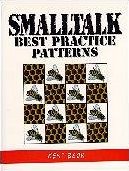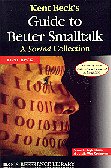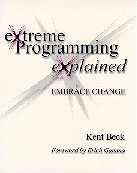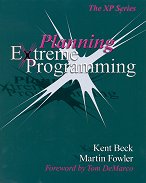Yet another "How to do Software Development" -- but with a
difference. Extreme Programming, or
XP, takes into consideration what programmers do normally, what they do
under stress, and what they like to do -- write code. And tailors
the process to deal with these uncomfortable facts.
Some of XP fits in with conventional RAD (Rapid Application
Development), designed to solve the problem of change: the
business may independently change direction whilst the system is under
development, and customers don't knowing what they want until after the
system is delivered (and whatever it is, it's usually not that
system!). So, factor the development into tasks, get the client to
prioritise them, and then deliver as much as possible in the time allowed.
Also, deliver incrementally, and so encourage feedback and change based on
experience with the actual system. (Beck points out that early delivery
also helps the cash flow.)
There are other parts of XP that are frankly heretical -- like delaying
design decisions as late as possible until they're needed -- but Beck
explains cogently why this actually makes sense. When developing software
in the presence of change, those future design decisions might never be
needed, because the project will have changed direction by then, so doing
them early and unnecessarily is just a waste of money. And since the other
parts of XP allow design changes to be made much more cheaply than
conventional wisdom allows, the development doesn't get trapped by bad or
wrong decisions.
The focussing of the whole code development around pair programming,
unit testing and continuous system integration is fascinating. This helps
give XP its great flexibility, but as Beck admits, continuous integration
probably limits the development team size to at most 10 in practice. But
one thing RAD shows is that a team of 10 working at full speed can
accomplish prodigious feats, so this might not be as much of a handicap as
it appears.
Beck makes an excellent case for XP -- which he has used successfully in
practice. It is designed to cope with all the things conveniently ignored
by most development methods: changing and uncertain requirements, team
personnel changes, and maintenance being the biggest part of the project.
He is also careful to describe cases where XP cannot work.
If you have a smallish development project with uncertain or changeable
requirements, XP is definitely worth a look. And at least I now know that
thing I like doing with code -- fiddling about, tidying it up, extracting
commonalities, making it cleaner -- is a valid part of the process, and
even has a fancy name -- I'm refactoring
it.




